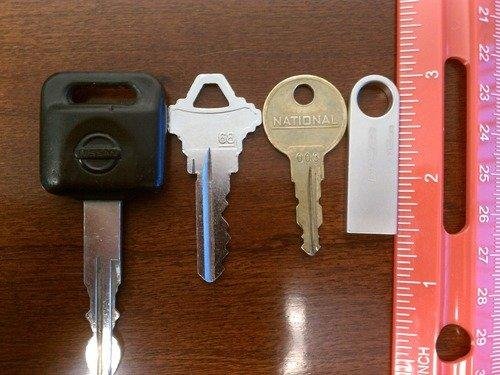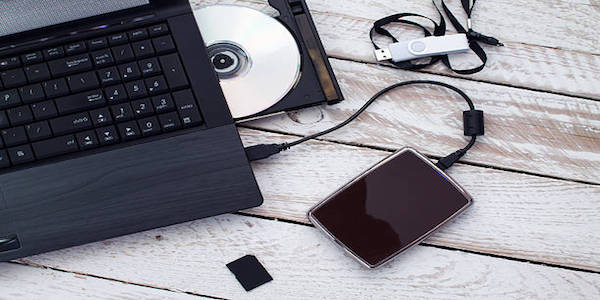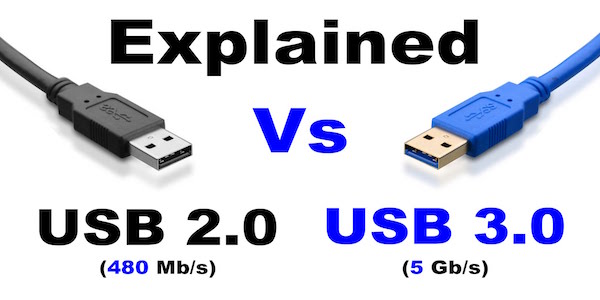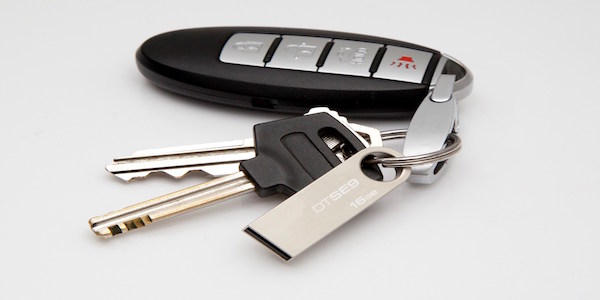With the convenience of cloud computing and storage, USB flash drives might seem like old news. But while emails and Dropbox are great for sharing a few documents at a time, flash drives are a faster and more secure method of sharing large files. With USB 3.0 technology, the fastest USB flash drives can even compete with external HDDs (hard disc drives) for speed, with the advantage of being far more portable and offer tons of space—enough that they’re worth having. Whether you are looking for speed, value, or security, we’re looking at two of the best, based on your nominations.
-
SanDisk Cruzer Fit CZ33 USB 2.0 Low-Profile Flash Drive
 Characteristic:
Characteristic:
- LED to monitor drive’s activity
- Password protect and encrypt private files with SanDisk SecureAcces software
- Tiny, Portable flash drive
- Backed by a 2-year limited warranty
- Available capacities: 4 GB, 8 GB and 16 GB
With its low-profile design, the Cruzer Fit USB flash drive easily fits USB ports and blends in with your tablets, notebooks, TVs or car audio players. Whether it’s your favorite pictures, music collection, video collection or your work documents, the Cruzer Fit USB flash drive gives you the ever-present storage you need in a compact and portable device.
| Brand Name | SanDisk |
| Item model number | SDCZ33-016G-B35 |
| Hardware Platform | PC, Mac |
| Item Weight | 0.32 ounces |
| Product Dimensions | 0.8 x 0.6 x 0.3 inches |
| Item Dimensions L x W x H | 0.85 x 0.58 x 0.27 inches |
| Color | Black |
| Processor Count | 1 |
| Computer Memory Type | DDR3 SDRAM |
| Batteries | 1 Lithium ion batteries required. |
Note that this USB drives are designed for notebooks, tablets, and car audio. They are supposed to be plugged in and seldom pulled out, or pulled out fairly rarely. They are harder to insert and pull out than the bigger size USB drives, so it may not be good for daily use of carrying it around. If you need to insert and pull it from the USB slot often, a fishing string can be added to the side of the USB drive (there is a small hole to insert the string and tie a knot).
There is a small orange indicator light when it is writing or reading, the light will blink attractively.
A simple speed test of copying and reading a 1GB file was done on Windows 7:
Read: 16.5 MB/s
Write: 4.10 MB/s
One feature people like is how you can password protect your files. So when the Cruzer Fit gets lost no one can access the files on it unless they know the password.
-
Kingston Digital DataTraveler SE9 32GB USB 2.0 Flash Drive
 Characteristic:
Characteristic:
- Supports – Windows 8.1, Windows 8, Windows 7, Vista & Mac
- Convenient – small, cap-less and pocket-sized for easy transportability
- Durable – metal casing with sturdy ring easily attaches to devices
- Storage – perfect for keeping all of your documents, videos, music and photos handy
- Capacity – with capacities available up to 64GB you’ll always have plenty of storage available*
Kingston’s DataTraveler SE9 USB Flash drive has a stylish metal casing with a large ring so it will attach easily. The small form factor makes it a great accessory for notebooks like Ultrabooks as well as tablets that offer USB ports. Its durable casing lets users securely carry this drive everywhere they go with their new devices.
| Capacity | 8GB-64GB |
| Color | Champagne |
| Speed | Standard |
| Feature(s) | Metal casing, Capless mini design, 2012 Red Dot design winner |
| USB | 2.0 |
I timed some file transfers on my computer (Dell Optiplex 380):
* For read speeds, I averaged 16.1 MB/s (ranged from 10 MB/s to 18 MB/s).
* For write speeds, I averaged 6.8 MB/s (ranged from 4 MB/s to 11 MB/s).
In general, larger files took longer to transfer than smaller files (single 300 MB file took longer to move than one hundred 3 MB files). Other users with the same device have reported an average of 17-18 MB/s read speeds and 11-12 MB/s write speeds. These are considered to be AVERAGE speeds for usb flash drives. If speed is of the essence, then look for a high speed drive that can read/write 30 MB/s or faster. If you’re mostly transferring documents, photos, and other small files, then these speeds should suffice.
If you are not always near a wifi connection so you can’t always upload your pictures to the cloud and that is where this thing comes in.
You just have a small adapter that lets you hook this USB to your phone and then you can transfer and delete them from your phone. Now you have more room on your phone and you can transfer your pictures to your computer at a later time.
More Articles:
What is the Difference between Flash Drive and USB Memory Stick
What is The Best USB Flash Drive?



